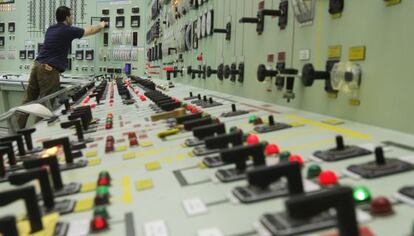Garoña nuclear plant begins gradual shutdown
Owners decide to disconnect from electric grid to avoid paying new energy tax

Spain’s oldest nuclear reactor disconnected its energy supply to the nation’s electric grid on Sunday as part of a gradual shutdown of the Garoña plant, after its owners decided not to begin paying a new energy tax imposed by the government.
Endesa and Iberdrola, the owners of the plant, made the decision to terminate Garoña’s operations seven months ahead of schedule and begin emptying all the nuclear material before the tax kicks in on January 1.
The plant, which was opened in 1971 — the same year as Japan’s Fukushima was built — only provided about one percent of the country’s electrical power.
But the plant was the focus of concerns by environmentalists and some scientists after the Fukushima nuclear accident earlier this year. The previous Socialist government had prolonged the lifespan of Garoña until next July, but a 2,190-euro tax on each kilo of uranium spent, which was introduced by Prime Minister Mariano Rajoy, forced Endesa and Iberdrola to bring forward the closing date.
The tax was part of the Industry Ministry’s energy reform bill, which was approved by the Senate on Thursday and is expected to be passed by Congress this week.
According to Nuclenor, the partnership formed by Endesa and Iberdrola that operates Garoña, it would cost 153 million euros a year to continue operating the plant because of the tax.
Rafael González, the mayor of Valle de Tobalina where Garoña is located, said that the closure would mean a loss of about 300 direct jobs plus 500 subcontractors. “They deceived us all,” said one union leader.
While in opposition in 2009, Rajoy promised to keep the plant going until well after 2013.
Tu suscripción se está usando en otro dispositivo
¿Quieres añadir otro usuario a tu suscripción?
Si continúas leyendo en este dispositivo, no se podrá leer en el otro.
FlechaTu suscripción se está usando en otro dispositivo y solo puedes acceder a EL PAÍS desde un dispositivo a la vez.
Si quieres compartir tu cuenta, cambia tu suscripción a la modalidad Premium, así podrás añadir otro usuario. Cada uno accederá con su propia cuenta de email, lo que os permitirá personalizar vuestra experiencia en EL PAÍS.
¿Tienes una suscripción de empresa? Accede aquí para contratar más cuentas.
En el caso de no saber quién está usando tu cuenta, te recomendamos cambiar tu contraseña aquí.
Si decides continuar compartiendo tu cuenta, este mensaje se mostrará en tu dispositivo y en el de la otra persona que está usando tu cuenta de forma indefinida, afectando a tu experiencia de lectura. Puedes consultar aquí los términos y condiciones de la suscripción digital.
Últimas noticias
The complicated life of Francesca Albanese: A rising figure in Italy but barred from every bank by Trump’s sanctions
Half of Scotland is in the hands of 420 property owners
How Japan is trying to avert ‘digital defeat’
From digital curfews to blocking apps: How technology experts protect their children online
Most viewed
- Why we lost the habit of sleeping in two segments and how that changed our sense of time
- Trump’s obsession with putting his name on everything is unprecedented in the United States
- Pablo Escobar’s hippos: A serious environmental problem, 40 years on
- The Florida Keys tourist paradise is besieged by immigration agents: ‘We’ve never seen anything like this’
- Charles Dubouloz, mountaineering star, retires at 36 with a farewell tour inspired by Walter Bonatti








































